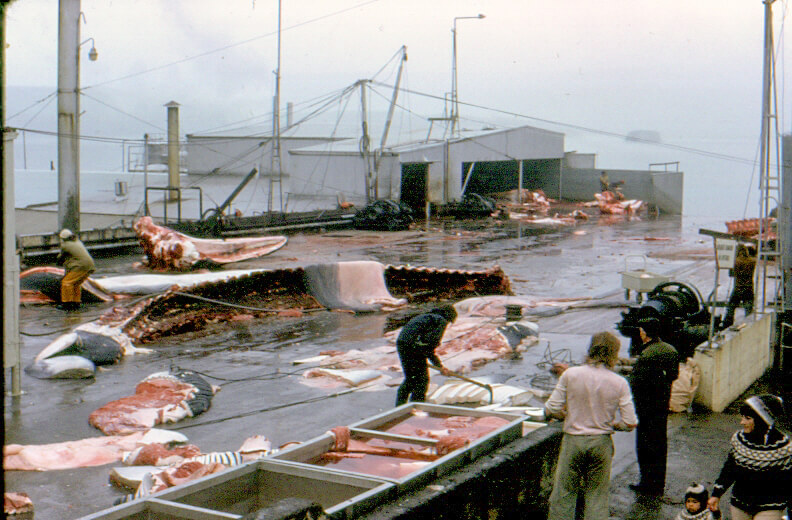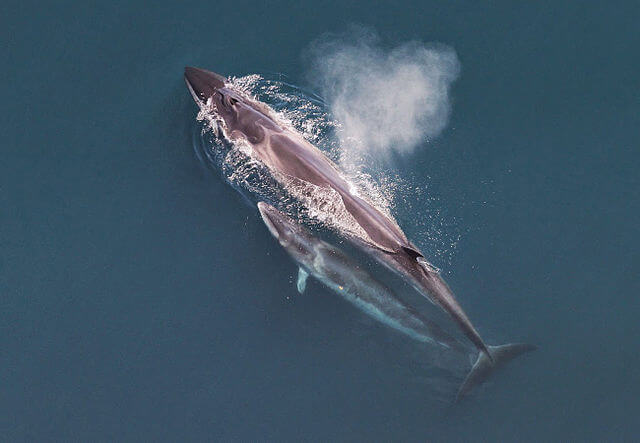In early July, images of whaling sparked a controversy. Sea Shepherd is concerned that Icelandic whalers have slaughtered a blue whale, which is endangered and protected by an international moratorium. On July 19, the Reykjavik-based Marine and Freshwater Research Institute states that the cetacean killed is a hybrid, i.e. the result of a cross between a male fin whale and a female blue whale. Iceland is not the only country to continue whaling in the North Atlantic, an activity that has been practised for more than nine centuries. But what does modern-day whaling look like? Part 1 of 3 of the “Whaling” Series.
Part 2: Whaling: Poized to fizzle out?
Part 3: Whaling: Do the whales hunted in the Nordic countries visit the St. Lawrence?
Current practices in the Nordic countries
Despite the International Whaling Commission (IWC) moratorium on whaling in force since 1986, two countries – Iceland and Norway – continue to practise whaling in the North Atlantic.
Immediately after the international moratorium came into effect, Iceland resumed its whaling operations as part of scientific research programs. Since 2006, the country has also officially resumed commercial harvesting of minke whales, the meat of which is mainly for the domestic market, and fin whales, which are generally for export. On July 27, 2018, Iceland announced that it was ending its harvest of minke whales, which was deemed to be no longer profitable for the local industry. Authorities granted their whalers a quota of 191 fin whales (including blue-fin hybrids) in 2018. The hybrid that triggered the controversy is the 22nd whale killed this summer. Since 1983, five blue-fin hybrid whales have been harvested in Icelandic waters.
As for Norway, the country complied with the IWC moratorium until 1993, then opposed it and resumed minke whaling, judging the cetacean population to be sufficiently abundant. Norway establishes its own annual quota. Last March, Norway set a quota of 1278 for minke whales to be harpooned in its waters in 2018, a 28% increase over last year. Yet whalers are struggling to meet government quotas – the number of catches dropped from 660 minke whales in 2015 to 432 last year (out of a quota of 999) – and the number of Norwegian vessels practising this hunt continues to decline, from about 350 in 1950 to 11 in 2017. Minke whale meat is mainly exported to Japan or used as animal feed.
Subsistence whaling
Some Aboriginal peoples, including the Inuit of Greenland, practise whaling in the North Atlantic for subsistence. The IWC recognizes that whale hunting is part of day-to-day life and an essential component of Greenlandic culture. This practice contributes to food security in a land covered by permafrost and glaciers, providing nutrition and income for families. The meat is consumed both during celebrations and in everyday meals. Baleen is used in crafts and design. Baleen whales – including bowheads (also formerly known as Greenland right whales), humpback whales, fin whales and minke whales – are hunted all along the Greenland coast, as are toothed whales. Annual catches vary according to IWC catch limits, hunting methods, environmental conditions and the seasonal availability and distribution of whales.
To learn more, we invite you to read the rest of the series on whaling that will be published in the coming weeks.
Sources:
La Norvège relève les quotas pour relancer la chasse à la baleine (Le Devoir, 06/03/2018)
Iceland sets target of 191 kills as country resumes whaling (The Guardian, 18/04/2018)
Vers un retour de la chasse commerciale à la baleine? (20 minutes, 28/06/2018)
Communiqué: capture potentielle d’un rorqual bleu en Islande (La Station de Recherche des Iles Mingan, 10/07/2018)
Anti-whalers say Icelandic hunters killed protected blue whale (Global News, 13/07/2018)
Controversial Whale is Hybrid (Island Monitor, 20/07/2018)
DNA test shows slaughtered blue whale is a hybrid, Iceland Marine Institute says (ABC Science, 20/07/2018)
ISLANDE. Le cétacé n’était pas une baleine bleue mais un hybride (Sciences et Avenir, 20/07/2018)
Management and utilization of large whales in Greenland (IWC, page visionnée le 24/07/2018)
L’Islande met fin à la chasse au petit rorqual, peu rentable (Journal de Montréal, 27/07/2018)
(2014) Boye, T.K., M. Simon, et L. Witting. How may an annual removal of humpback whales from Godthaabsfjord, West Greenland, affect the within-fjord sighting rate? Journal of Cetacean Research and Management, 14: 51–56.







